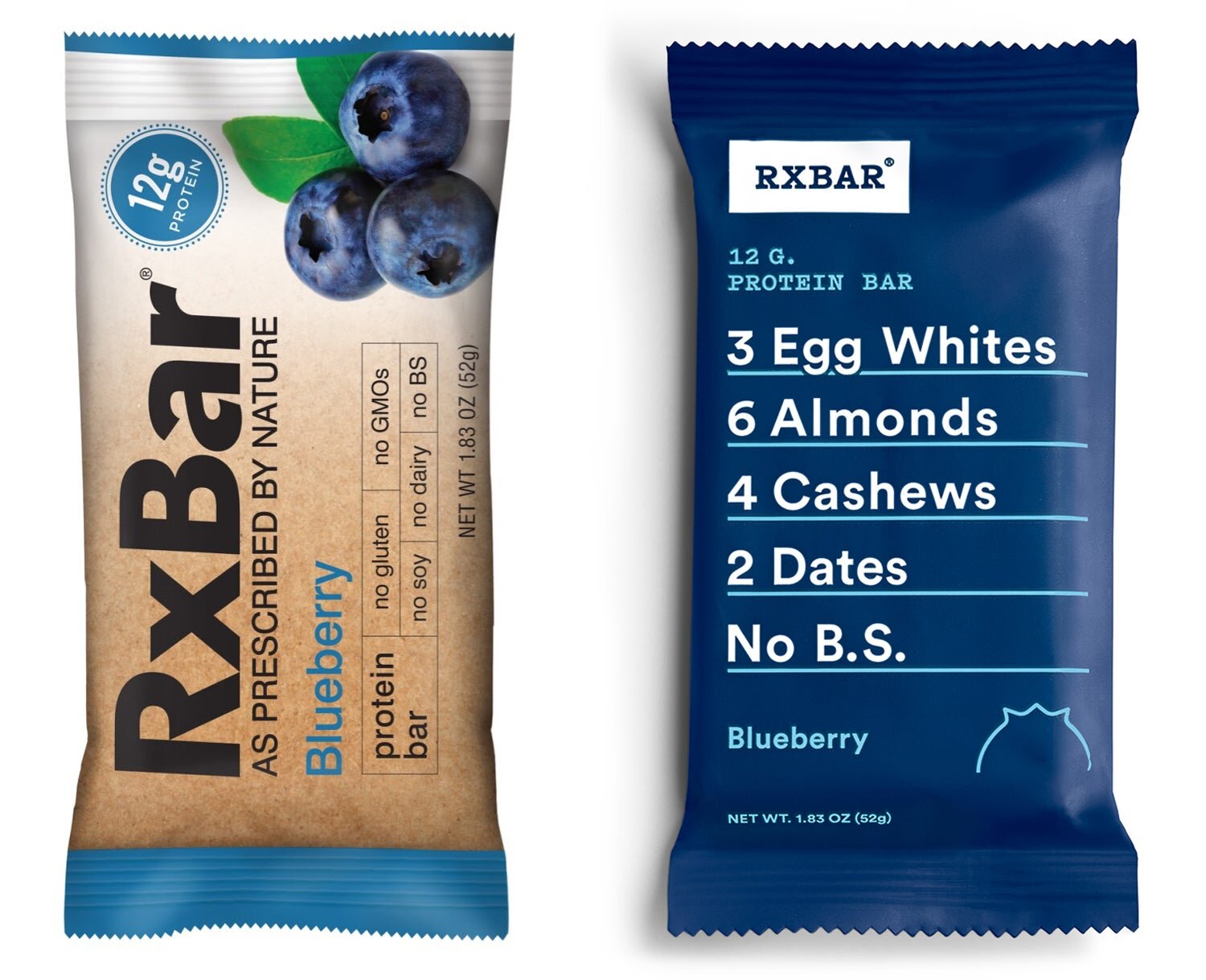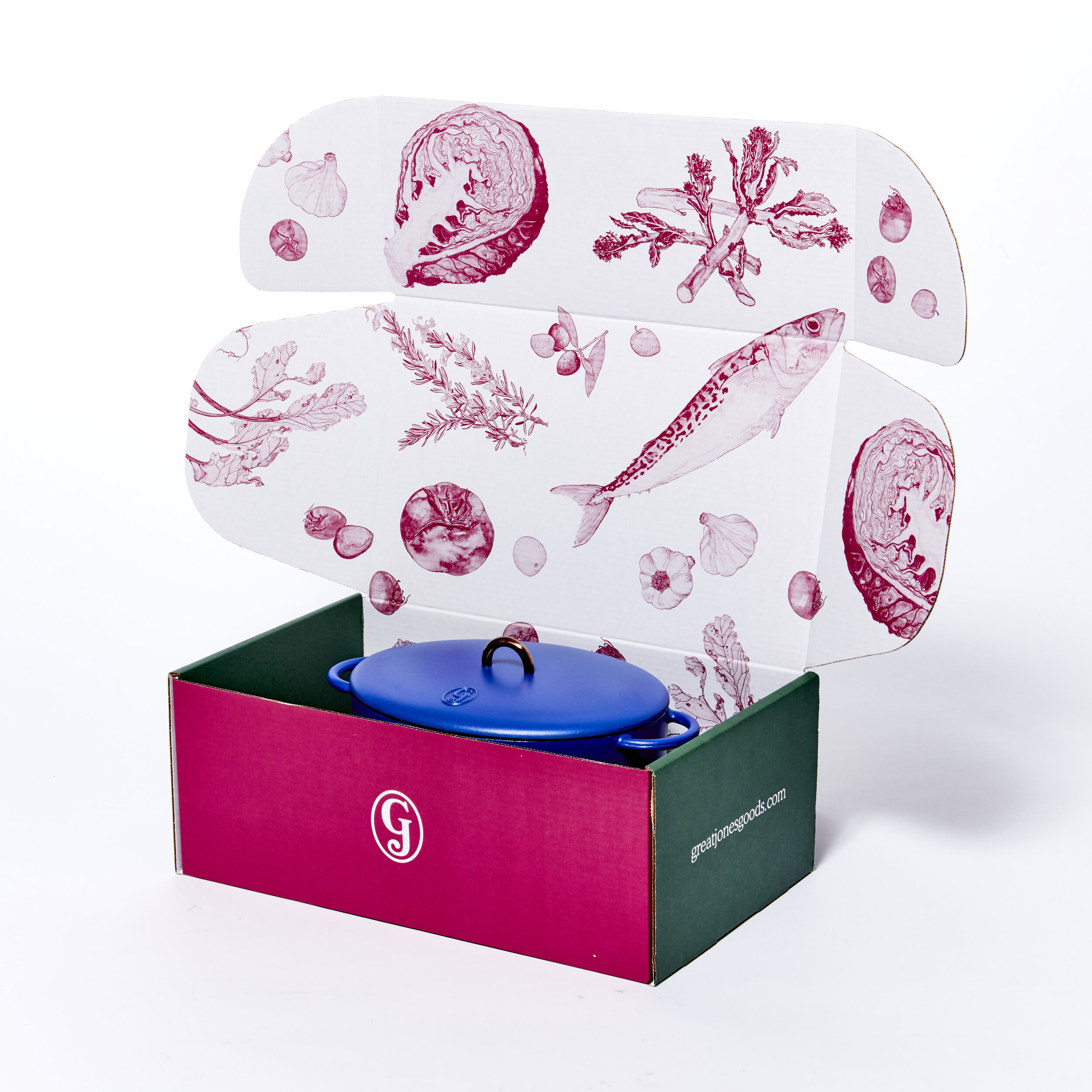The Power of Packaging Design: Why It Matters and 5 Actionable Tips
Image Credit: Great Jones®
Struggling with where to start? For a step-by-step guide on assessing the power of your brand check out our free Brand Analysis Tool here.
Let us make a bold statement today.
Packaging design is as important as the product itself.
On its surface that might sound crazy, but this is a sentiment shared by businesses around the world that have built successful brands.
Image Credit: RX Bar®
Take the case of the packaging overhaul for RxBar®. With mild success (just enough stability to stay in market), their protein bar was virtually unknown in 2013.
It was going nowhere.
A drastic packaging redesign changed all that. What was otherwise a stale and disconnected packaging experience became a bold and clean superstar overnight.
No B.S.
The result? RxBar® made a whopping $160 million in sales in 2017 after the redesign. Not bad for a company that sold only $2 million worth of protein bars in 2014.
It gained the attention of new customers, retailers, and Kellogg Company, which eventually acquired RxBar® for $600 million. How’s that for a payday?
Package design is not just for struggling brands.
Even market leaders realize the power that a packaging refresh can have on a brand.
Despite being the leader in the global yogurt market, Chobani® recognized that they had a problem—the brand was starting to become indistinguishable from other yogurt brands on the shelf.
Image Credit: Chobani®
Chobani® went back to the drawing board and redesigned the packaging to focus on elements that convey artisanal, natural, and rustic design.
The result? Chobani® stood out from a large sea of yogurt competitors because their packaging drew more attention and resonated with customers who were looking for exactly what they were offering.
What these examples tell us is that package design is a powerful extension of a brand's visual identity and a critical factor of a brand’s success.
Still not convinced?
Numbers never lie, so let's dig in.
Source: WestRock's Packaging Matters
Do the RxBar® and Chobani® examples make a bit more sense now?
Trial and repeat purchases are critical to a brand's success and the numbers tell us packaging design is one of the most relevant ways to do just that.
“Not seen not bought.”
In the highly competitive space of fast-moving consumer goods, consumers are bombarded with a seemingly infinite number of options making it difficult for brands to stand out on the shelf.
The unwritten rule is this: Not seen not bought.
Brands are competing for shelf space, but what if there was a better way to think about capturing the attention of your customer?
Enter shelf impact, a performance indicator that gauges the visibility of a product when displayed next to similar products from the competition.
Visibility is the precursor to a purchase decision. Without visibility, there is no purchase.
Customers spend only 3-5 seconds deciding on which product to purchase – a decision that is most often made in-store. That short period is your opportunity to convey what your product is all about through packaging design.
5 Actionable tips to improve your product’s packaging
You now know why packaging design is important, but how do you achieve the level of success that powerful and effective packaging promises?
By following the below steps, you can set your packaging up for success.
1- Know your who, what, and where.
Knowledge is power. Start your product packaging process by asking yourself these three questions:
Who is buying your product?
You should have a deep understanding of who is purchasing your product and why. Knowing this will help you speak more clearly and appeal to the subconscious of your consumers.
What are your competitors doing?
Knowing your competitors will give you insight into how they package and promote their products so you can find ways to outsmart them.
Walk through several stores in your local neighborhood and take photos of what you like and what you do not like.
Where are people buying your product?
Consider the unique challenges of being represented on a physical shelf vs. a digital shelf.
Where would your product go in-store? What categories will be adjacent to you? Depending on these answers you will need to adjust your strategy accordingly.
2- Stay on-brand.
Before packaging, you should have completed a robust brand strategy and compelling brand identity.
When developing your packaging you should ensure you adhere to the parameters that have been established during this process (this is often referred to as your brand bible).
From primary to secondary color palettes, tints to approved pairings, logo placement to negative space requirements, and more, you need to remain consistent across all mediums.
Build recognition by being consistent and staying on-brand.
3- Tell your story.
People love a good story.
Great brands are successful because they humanize themselves and become more relatable. Packaging presents an opportunity to narrate your story and humanize your brand.
By using relatable illustration and/ or clever copywriting you accomplish this in a more compelling and relatable way.
Great Jones® broke through the mundane market of at-home cookware and captured market share by doing just that.
Image Credit: Great Jones®
On a mission to empower home cooks and help amateur chefs feel prepared and proud in their kitchens, Great Jones®, absolutely nailed the concept of capturing their story with their packaging.
With timeless category-related images on the outside and the inside, they successfully illustrated the process of cooking at home in a fun, inspiring, and relatable way.
Make the packaging part of your story’s experience.
4- Be bold
When in-store, the average shopper takes about 3-5 seconds to select a particular product from 3-6 feet away.
That’s not much time and at that distance, you might just blend in as “another option.”
Your ability to stand out is measured by contrast.
Color, among other factors, can create the contrast that your product needs to be visible and distinguishable from other brands.
The effective use of a color scheme serves as a brand identifier and can increase brand recognition.
Image Credit: Happy Socks®
Happy Socks®, the European eccentric sock brand that set out to spread happiness by turning an everyday essential into a colorful design piece epitomizes this.
By leveraging color in fun, unique, and creative ways throughout their packaging, they successfully capture a shopper’s attention through contrast.
Be bold but remember to stay on-brand.
5- If you’ve got it, flaunt it!
Businesses exist because they solve problems for customers.
Often, these solutions are simple and should be presented as such.
When a feature or benefit of your product is identifiable, consider letting the product speak for itself by allowing certain elements to shine through the packaging.
Image Credit: Kind®
KIND®, revolutionized this practice when it introduced packaging that dedicated nearly 50 percent of its real estate to the ingredients themselves.
Sometimes, less is more.
Packaging design can change your business
Make no mistake, your packaging is not only an extension of your brand but also a marketing platform. It has the power to increase trial and repeat purchases.
Use it to your advantage by following the above steps to drive awareness and recognition with your customers.
Got a thought? Drop us a note below.
Need help? We got you.







